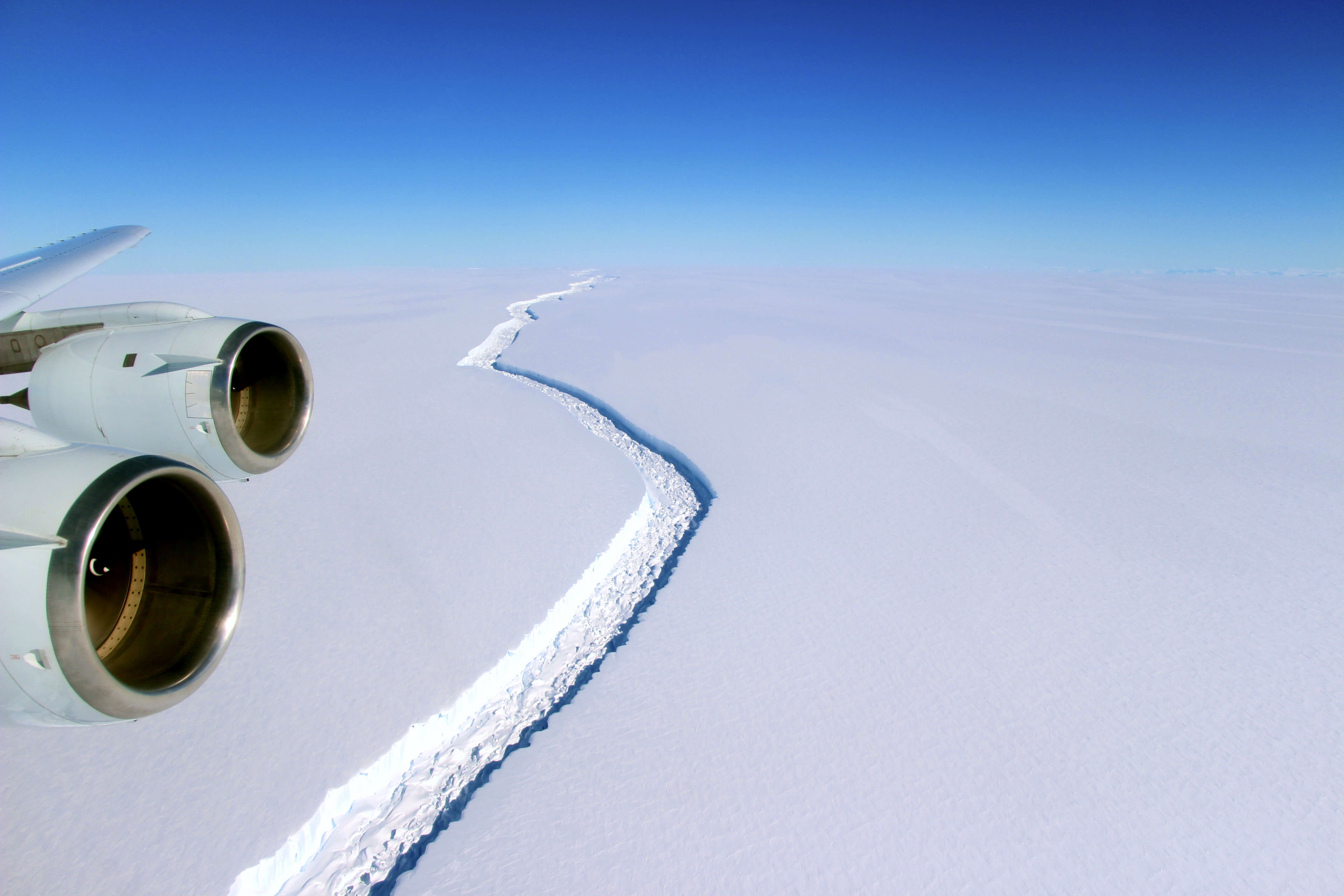Something is very wrong on our planet’s poles.
Temperatures soared in the Arctic over the weekend as the storm system that brought snow and freezing rain to the US’s east coast this week pushed warm air into the Arctic. Scientists are alarmed because it’s the third time temperatures have seen a far-above-average bump during a winter that has already been relatively balmy.
The National Snow and Ice Data Center reported earlier this month that, as a result, Arctic sea ice has reached a record low. Not once in 38 years of satellite records has January arrived with so little ice coverage on the top of our planet.
Last month saw 100,000 fewer square miles of ice than January 2016 — the previous January record low — and 487,000 fewer square miles than the long-term average between 1981 and 2010. For comparison, the amount of sea ice missing from the Arctic this winter is roughly twice the size of France.
The low ice levels are certainly in line with a planet that is rapidly warming — 2014, 2015 and 2016 each broke global temperature records — but the Arctic is warming even faster than the rest of the world. At the end of 2016, the National Oceanic and Atmospheric Administration reissued a warning that the Arctic appears to be heating up twice as fast as the rest of the planet.
That all means that this winter stands a good chance of beating last year’s Arctic record for warmest winter — though temperatures in the Arctic are notoriously unpredictable, and could still drop before the season’s over.
#Arctic sea ice extent for January 2017 was the lowest January in the 38-yr satellite record. https://t.co/3pPss4vRVJ pic.twitter.com/Hcpb8rBrKo
— NSIDC News (@NSIDC) February 7, 2017
While the top of the planet is showing alarming signs even during its coldest month, bad news is also coming out of Antarctica, where summer is coming to an end. Ice coverage there is also below average, the National Snow and Ice Data Center reports, and one of the Arctic waters, the Amudsen Sea, is almost completely free of ice.
Also in Antarctica, east of the Amudsen Sea, the Larsen C ice shelf is on the verge of separating from the continent, The New York Times reported last week. This will create one of the largest icebergs on record, and “uncork” the glaciers behind it, hastening their creep toward the sea.
Lower levels of sea ice will have effects beyond the Arctic. For one, when the ocean is exposed, rather than covered by ice, it absorbs energy from the sun rather than reflecting it back into the atmosphere. This makes for a warmer ocean, which can influence weather patterns. In the northern hemisphere, a warmer Arctic means a weaker and wobblier jet stream, which, among other effects, makes weather conditions linger longer, intensifying droughts and the impact of severe weather.
In the long term, the warmer Arctic will drive sea level rise, pushing seas several feet higher by the end of the century, with disastrous consequences for coastal cities and low-lying countries such as Bangladesh and several Pacific Islands.
The shrinking Arctic also has economic implications. Less ice means new passageways will be opening up, allowing for more shipping and tourism. It also, ironically, could mean more oil drilling in the Arctic, would could also be encouraged by improving US-Russia relations.
This all adds up to a worrying picture. Climate change is moving at a steady clip globally, and, in areas like the Arctic, is moving even faster. This year’s freakishly warm Arctic winter and unusual weather around the world are making the real-world effects of climate change increasingly difficult to ignore. The threat, long described as one we would face in the future, has moved firmly into the present.
Unfortunately, by the time the Pandora’s box of climate change is fully open and the most attention-grabbing effects of climate change arrive, it will also be too late for governments’ actions to turn back the clock.
Update: This piece was originally published in February. But now it’s official: the Larson C Ice Shelf officially separated from Antartica on July 12.
